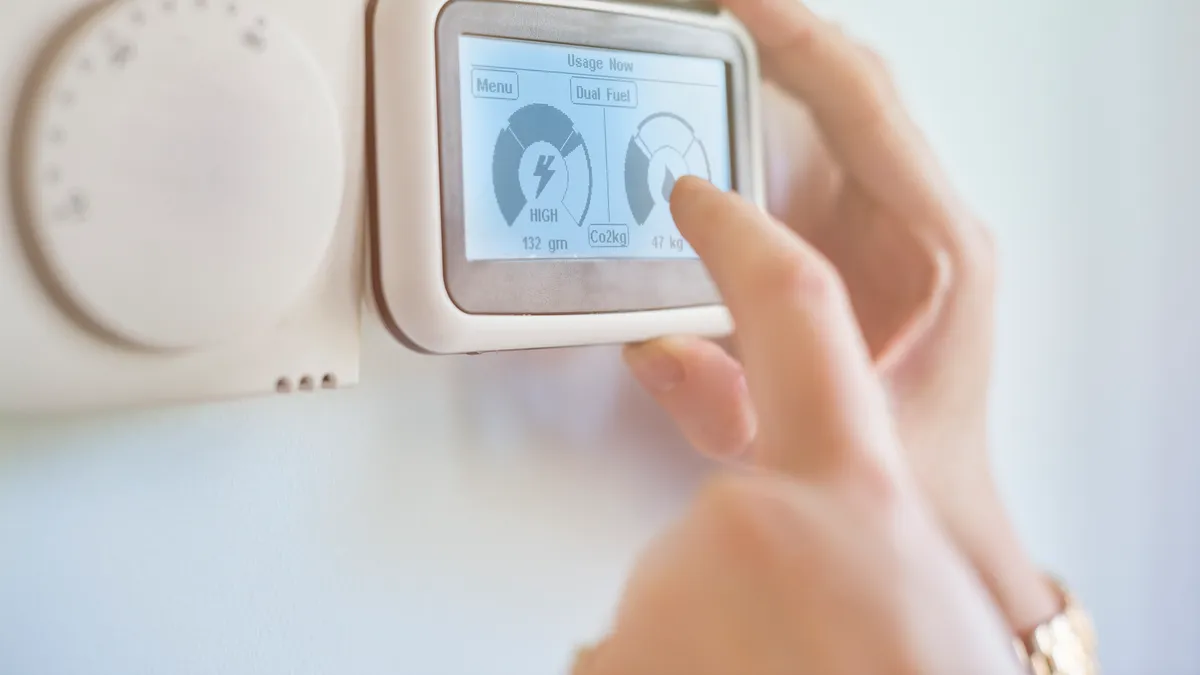Dive Brief:
- Arizona Public Service has rolled out three new programs offering customers new energy efficiency and storage options, aimed at shifting power demand to times when there is abundant solar energy and reducing load at more expensive peak times.
- The programs focus on new clean energy technology available for residential customers: smart thermostats, controllable water heaters and subsidized battery storage offerings. Last week, APS also announced a rooftop solar energy program aimed at income-limited customers.
- The announcement comes as the utility spends millions opposing a ballot initiative that would require Arizona to adopt a 50% renewable energy standard.
Dive Insight:
APS says approving the ballot initiative could spike power bills and force it to shut down the Palo Verde nuclear plant, but the utility is steadily announcing new — albeit modestly sized — renewable energy programs of its own as it fights the proposal.
In the span of a week, APS announced new programs that take advantage of four energy technologies residential consumers are embracing and can help utilities manage the grid.
APS's new Cool Rewards program is a bring-your-own-thermostat offering allowing APS to remotely adjust a participant's temperature up to 20 times per year. In return, customers get a $25 credit for signing up and an annual $25 credit as long as they participate.
APS is starting small with its storage program: later this year the utility will install batteries in 40 homes to help customers avoid demand charges and reduce peak usage. Customers receive $500 once accepted into the program and the battery is activated.
Electric water heaters are ubiquitous (about 50 million in the United States) but often overlooked as a grid resource. In its Reserve Rewards program APS says it will offer rebates for the full price of about 200 efficient, grid-interactive water heaters in homes that are "located in targeted areas." Customers own the water heaters, which aim to utilize as much cheap solar energy as possible.
And last week, APS followed a growing trend of utilities working to include low-income families in the development of clean energy resources. The utility said it will install solar systems on approved participants' roofs, sized from 4 kW to 8 kW, in exchange for a $30 monthly bill credit for 20 years.
Programs like this one have become a popular way for utilities to reach a segment of customers often overlooked. Duke Energy, Los Angeles Department of Water and Power, Consolidated Edison and others have recently developed programs.
As it expands its residential clean energy offerings, APS remains locked in a battle opposing the 50% renewable initiative, and it is not alone. Tucson Electric Power recently registered a political action committee in order to oppose the ballot initiative as well.
The proposal is backed by billionaire activist Tom Steyer, whose organization has spent millions to push the issue in Arizona, ultimately leading the largest utilities to fund their own campaigns.
APS may have taken a page from the playbook of NV Energy, which faces a similar challenge in Nevada. One of the ballot initiatives in the state, Question 3, which seeks to eliminate regulated utility monopolies in order to let customer choice increase renewable energy. NV Energy responded with a proposal to double the state's renewable energy, though only if voters reject that ballot initiative.
Shortly after NV Energy's move, major environmental groups including the Sierra Club and Natural Resources Defense Council announced they opposed the choice measure.
CORRECTION: A previous version of this story misidentified the ballot initiative being opposed by NV Energy. The utility opposes Question 3, which seeks to eliminate regulated utility monopolies.















